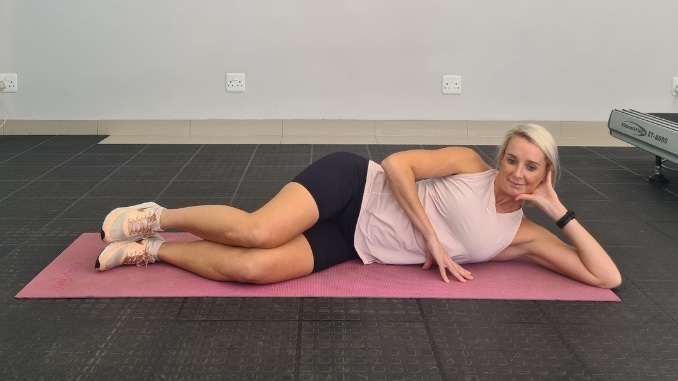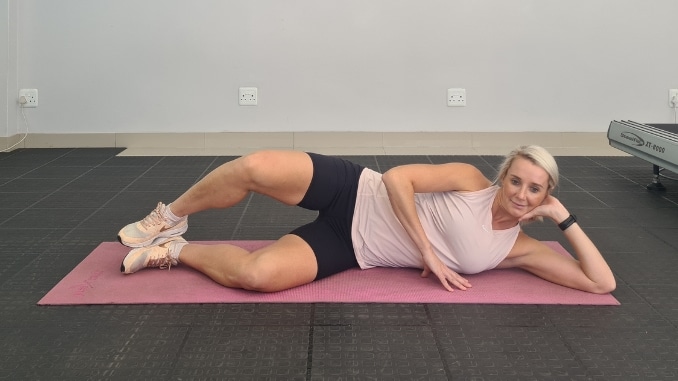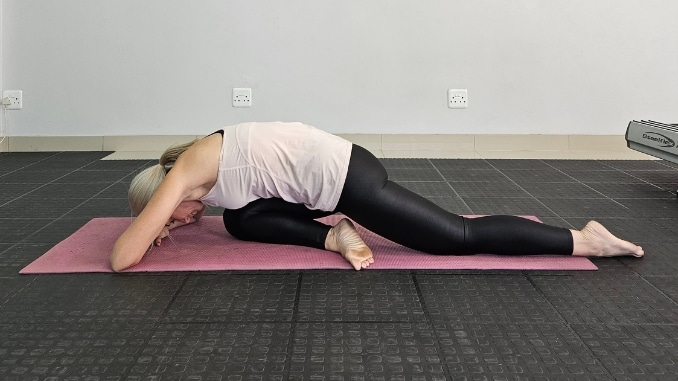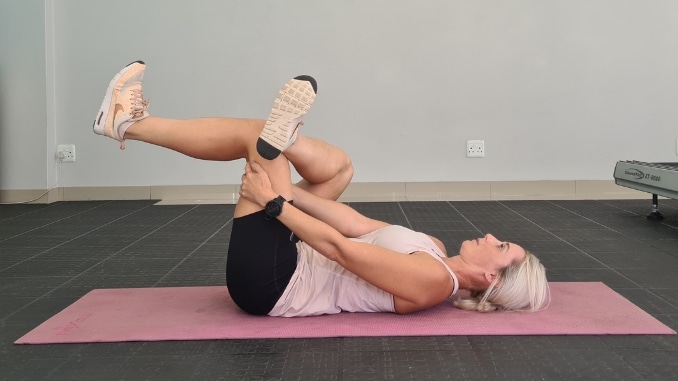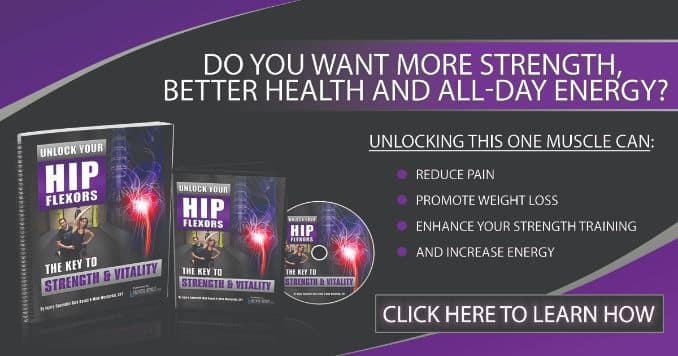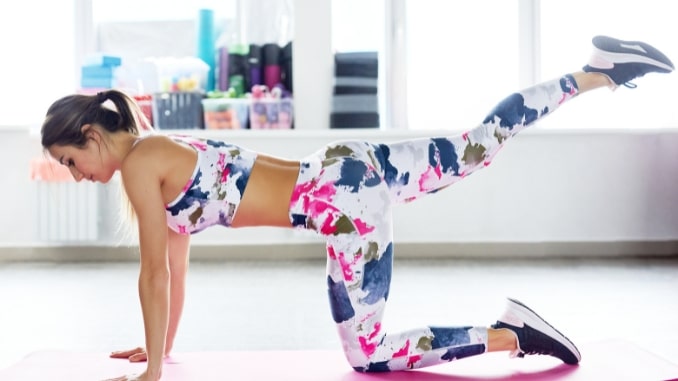
External rotation of the hip is when the thigh and knee rotate outward, away from the body. Actions that use external hip rotation include getting into a car, pitching a baseball, and all other movements that require a person to rotate the pelvis while placing most of the body’s weight on one leg. Continue reading and learn the effective hip external rotation exercises!
I. Hip External Rotation Exercises Activates Variety of Muscles:
1. Piriformis
The piriformis muscle is an external (or lateral) rotator of the hip along with the superior and inferior gemellus, quadratus femoris, obturator internus, and externus. The piriformis muscle rotates the femur during the hip extension and abducts the femur during flexion of the hip.
2. Gemellus Superior and Inferior
The superior gemellus acts as a part of the triceps coxae muscle group to produce external (lateral) rotation and abduction of the thigh. The movement produced by this muscle group’s contraction depends upon the leg’s position.
The inferior gemellus is a small, paired muscle located in the deep gluteal region of the lower extremity. It is part of a larger, tricipital (three-headed) muscle complex called triceps coxae (triceps of the hip), which also includes the superior gemellus and obturator internus muscles. As the gemelli muscles (superior, inferior) are the smaller of the three and less capable of independent actions, they are considered accessory reinforcements to the obturator internus.
3. Obturator Internus and Externus
The obturator internus is the deep muscle of the hip joint, which is part of the lateral wall of the pelvis. It is found in the superior inner side of the obturator membrane.
-
- Laterally/ externally rotates the hip
- Abduction of hip
- Hip joint stabilizer(only when torques are applied in the specific directions in which the muscle is active.)
The Obturator externus (OE) muscle is the conical-shaped short external rotator located on the obturator membrane’s outer side in the pelvis’s lateral wall. The obturator externus externally rotates the hip during neutral and flexion but not in hip extension. It may assist in the adduction of the hip joint during flexion. It helps stabilize the femur’s head in the socket during flexion and internal rotation as its posterior fibers reinforce the posterior capsule of the hip joint.
4. Quadratus Femoris
Quadratus femoris is a paired, rectangular-shaped muscle of the gluteal region. It is part of the group of muscles known as the lateral or external rotators of the thigh. The quadratus femoris muscle acts as an adductor and external rotator of the hip. It is innervated by a small branch off the sacral plexus. Specifically, it derives its innervation from the L4, L5, and S1 spinal nerves.
5. The Gluteus Muscles
The gluteal muscles, often called glutes, are a group of three muscles that make up the gluteal region commonly known as the buttocks: the gluteus maximus, gluteus medius, and gluteus minimus. The three muscles originate from the ilium and sacrum and insert into the femur.
The gluteus maximus works with the semitendinosus and semimembranosus muscles to extend the hip. The muscle also works in conjunction with the iliopsoas, piriformis, and obturator muscles to externally rotate the hip.
6. Psoas Muscles
The major and minor psoas muscles and the iliacus muscle comprise the iliopsoas musculotendinous unit. Commonly called the iliopsoas muscle. This complex muscle system can function as a unit or intervene as separate muscles. It is essential for correct standing or sitting lumbar posture, hip joint, and during walking and running.
7. Sartorius
The sartorius is the longest muscle in the body, spanning both the hip and the knee joints. The word sartorius is derived from the Latin word sartor, which translates to patcher or tailor, due to how the individual will position their leg while working.
II. Understanding the Externally Rotated Hip
Without sufficient strength in the rotators, you may compensate for your hips’ lack of stability or strength with your lower back and quads. This can, then, cause, e.g., knee pain and other postural dysfunctions. External rotation of the hip is when the thigh and knee rotate outward, away from the body. Actions that use external hip rotation include getting into a car, pitching a baseball, and all other movements that require a person to rotate the pelvis while placing most of the body’s weight on one leg.
III. Symptoms and Challenges with Externally Rotated Hip:
There are two reasons why so many people have difficulty developing their hip external rotation. First, most stretches do not give you adequate time to stretch. The second problem is that many people begin with far too difficult workouts.
The term “externally rotated hip” refers to a condition in which the thigh bone (femur) rotates outward from the body’s midline. This rotation can cause various symptoms and difficulties that might impair an individual’s movement and overall well-being. Here are some of the most prevalent symptoms and difficulties connected with an externally rotated hip:
-
- Limited Range of Motion: An externally rotated hip might limit the usual range of motion in the hip joint. Individuals with this impairment may find it difficult to do activities that involve internal hip rotation, such as crossing the legs or rotating the leg inward.
- Hip Pain: An externally rotated hip can result in pain and discomfort in the hip joint. Over time, the incorrect alignment and increased stress on joint structures can cause inflammation, muscle imbalances, and potential joint injury.
- Lower Back Pain: Because of the altered alignment of the hip joint caused by external rotation, the surrounding structures, particularly the lower back, might be affected. As the body attempts to adjust to the altered hip mechanics, this can contribute to lower back discomfort and stiffness.
- Gait Deviation: External hip rotation can interfere with regular walking patterns. It may lead a person to walk with an uneven stride, putting additional strain on specific muscles and joints. This can cause imbalances and overuse problems in the lower limbs.
- Muscle Imbalances: Muscle imbalances around the hip joint might occur from an externally rotated hip. Some muscles may become abnormally tight or hyperactive, while others may weaken or become restricted. This imbalance might aggravate the symptoms and difficulties connected with the illness.
- Changes in Posture: Changes in hip position impact overall posture. It may cause a pelvic tilt, resulting in an unequal weight distribution through the spine and lower extremities. This can lead to postural abnormalities such as swayback or greater lower back curvature.
- Difficulty in Sports and Physical Activities: An externally rotated hip can make it difficult to participate in sports and physical activities that involve a wide range of hip motion and rotational movements. Movements such as squatting, lunging, and participating in rotational sports may be restricted and sometimes uncomfortable.
Physical therapy, hip external rotation exercises to strengthen and stretch specific muscle groups, manual therapy techniques, and posture retraining may all be used to treat an externally rotated hip. Surgery may be required in some cases to rectify severe rotational anomalies.
Individuals suffering symptoms or difficulties due to an externally rotated hip should visit with a healthcare expert, such as a physical therapist or orthopedic specialist, for an accurate diagnosis and treatment plan customized to their personal needs.
IV. Benefits of Unlocking the Potential
Unlocking the potential of an externally rotated hip can provide various benefits that improve mobility, athletics, and overall well-being. Here are some of the primary advantages of unlocking the potential of an externally rotated hip:
1. Improved Hip Mobility and Flexibility
Addressing external rotation constraints can dramatically enhance hip mobility and flexibility. Individuals can feel enhanced freedom of movement by restoring the normal range of motion in the hip joint, making it simpler to do activities that demand hip rotation, such as walking, jogging, and sports motions. Improved hip mobility also promotes better posture and joint alignment, lowering the likelihood of muscle imbalances and other problems.
2. Improved Athletic Performance and Functional Movements
An externally rotated hip is essential in many athletic and functional actions. Athletes can improve their performance and efficiency in various sports and physical undertakings by realizing their full potential. The capacity to create power and control in actions such as pivoting, cutting, and changing direction can be improved, resulting in increased agility, speed, and overall athletic ability.
Furthermore, everyday functional movements such as squatting, lunging, and bending can be performed with improved ease and efficiency. This allows people to perform daily duties and activities more easily and with less chance of harm.
3. Pain and Discomfort Reduction:
Addressing the limits and imbalances resulting from an externally rotated hip can assist in relieving pain and discomfort in the hip joint, lower back, and surrounding muscles. Excessive stress on joint structures and soft tissues can be reduced by restoring appropriate alignment and balance, lowering inflammation and pain. Improved muscular balance and function can help minimize lower back strain, resulting in less back pain.
Realizing the potential of an externally rotated hip can help to improve overall biomechanics by distributing stresses more uniformly throughout the body during movement. Overuse injuries and repetitive tension on specific muscles or joints can be reduced as a result of this.
It’s important to note that unlocking the potential of an externally rotated hip necessitates a multifaceted strategy that includes targeted workouts, stretching, and functional movement training. Consultation with a healthcare professional, such as a physical therapist or sports performance specialist, can provide tailored direction and ensure a safe and effective progression toward optimizing the potential of an externally rotated hip.
In conclusion, unlocking the potential of the externally rotated hip provides a variety of benefits, including increased hip mobility and flexibility, greater athletic performance and functional motions, and a reduction in pain and discomfort. Individuals can maximize their movement capabilities, increase performance, and have a better quality of life by correcting limits and asymmetries in the hip joint.
V. Effective Hip External Rotation Exercises Regimen
Prioritizing the individual’s general well-being and safety is critical while developing an effective hip workout plan. The first step is to have a musculoskeletal health assessment and consultation with a healthcare practitioner. This evaluation will assist in identifying any specific hip issues or restrictions, allowing for a customized training regimen.
A proper warm-up regimen is needed before entering the major hip external rotation exercises to prepare the hip muscles and joints for physical activity. Incorporating dynamic stretches, such as leg swings and hip circles, can improve flexibility and reduce the chance of injury.
Strengthening activities are essential for especially targeting the external rotators of the hips. Clamshells, lateral band walks, and sitting hip abduction exercises are examples of such exercises. These hip external rotation exercises are designed to stimulate and develop the muscles that control external rotation, which can improve hip stability, balance, and overall hip function.
Individual demands may differ; therefore, it is always best to check with a healthcare practitioner or a skilled fitness trainer to guarantee optimal form, development, and adaption of the workout plan. They may provide tailored coaching and track progress, enhancing the benefits while avoiding the hazards connected with hip workouts.
VI. Hip External Rotation Exercises
1. Clamshells
Lie on your side. Bent your knees bent with your ankles in line with your hips. Lift your top knee towards the ceiling while keeping your feet together. Lower your leg and repeat 10 times. You may use resistance bands to add more resistance. This exercises the muscles of the hip, particularly the gluteus medius.
2. Fire Hydrants
The Fire hydrant exercise is amazing for toning those hard-to-reach hip abductors and the glute muscles. Using a strong, engaged frame in the 4-point position, lift one leg out to the side around 30-45 degrees. Hold this position briefly before lowering your leg to the starting position. Repeat the movement.
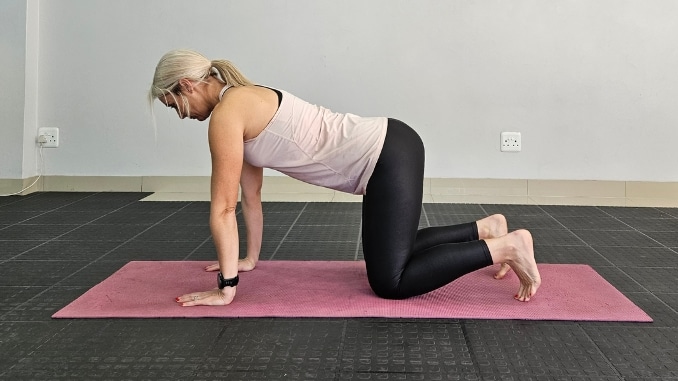 |
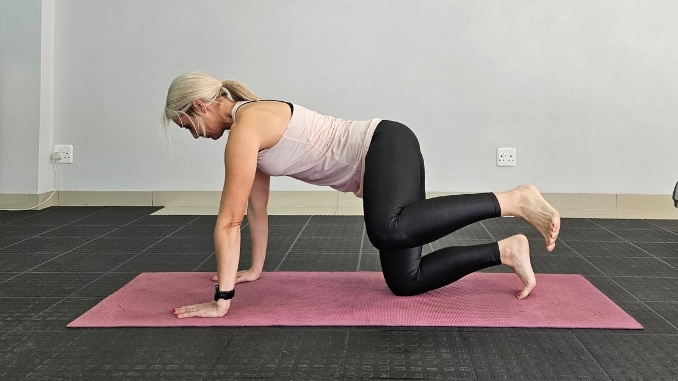 |
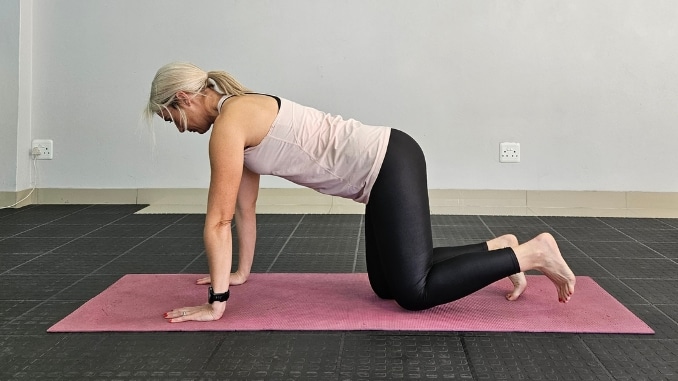 |
3. Pigeon Pose
Begin in a four-point position. Move into a straight arm plank position, maintaining proper alignment with your head, shoulders, hips, and legs. Lift one knee toward your shoulder and position your foot across your body. Lower your body into your leg and stretch your hip area, resting your forehead on your arms. Hold this position for about 10 seconds. Take a couple of deep belly breaths through your nose and out through your mouth. Repeat the movement with the opposite leg.
Start off with one set of 1 repetition on each side, holding for 10 seconds. The intensity of this pose is light.
4. Figure-Four Stretch
Lie on your back with your knees bent and your feet flat on the floor. Cross one ankle over the opposite knee and raise both legs, holding your lower leg with both hands. Pull your knee closer to your chest to intensify the stretch. Hold this position for 10 seconds. Take a couple of deep belly breaths in through your nose and out through your mouth. Relax, return to the starting position, and repeat the movement on the opposite side.
5. Hip Circles
Stand straight with your feet wider than shoulder-width apart. Bend the knees slightly and place your hands on the hips. Slowly rotate your hips, making big circles. Complete a set in one direction and then switch to the opposite direction.
 |
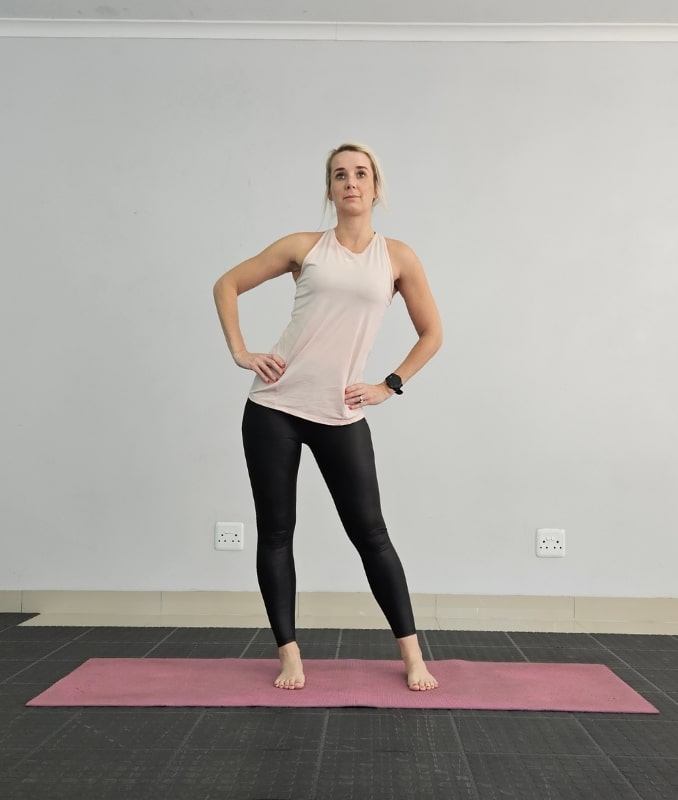 |
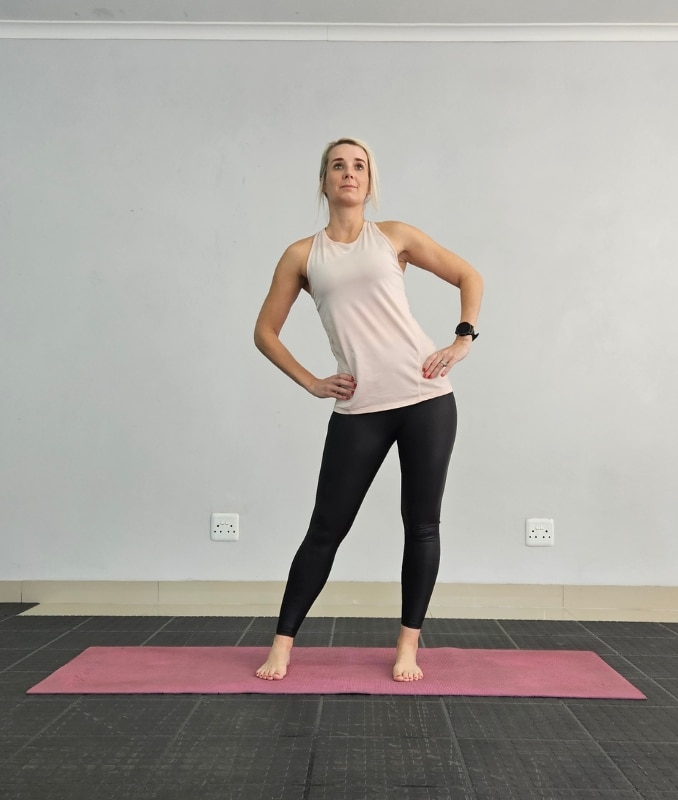 |
6. Squats
Begin in an upright standing position with your feet slightly wider than shoulder-width apart, maintaining good alignment with your head, shoulders, and hips. Clasp your hands together in front of your body at chest height and tighten your abdominal muscles. Bend your knees and hinge through your hips to lower your seat into a squat position. Keep your knees behind your toes. Raise back to an upright standing position, squeezing your glutes at the top. Repeat the movement. Start with 1 set of 10 repetitions.
 |
 |
VII. Tips for Maintaining Hip Health
- Always observe proper form and technique to avoid injury.
- Remember to consider gradual progression and listening to the body.
- Consulting a healthcare professional for specific conditions.
- Stay active and avoid prolonged sitting.
- Observe stretching and mobility exercises as part of a daily routine.
- When it comes to hip external rotation exercises, always balance strength and flexibility training.
Outlook:
The hip joint is a crucial component of human mobility and function, allowing us to walk, run, jump, and perform various daily activities. One essential aspect of hip functionality that is often overlooked is external rotation. The ability to externally rotate the hip plays a significant role in overall movement efficiency and joint stability. An externally rotated hip is closely linked to injury prevention, especially in the lower extremities. When the hip joint lacks external rotation, the body tends to compensate for the limited mobility by placing additional stress on neighboring joints and muscles.
Embrace the process, and don’t be too hard on yourself. Progress may be gradual, but it is undoubtedly transformative. Celebrate each milestone, no matter how small, as they all contribute to your growth. Believe in yourself, for you are capable of achieving greatness. You have the strength within you to conquer any obstacles that come your way. You are resilient, and with every workout, you become even stronger, physically and mentally. So, take action and do these hip external rotation exercises now!

